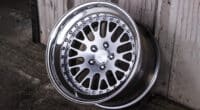There’s more to car suspension than just the shocks and springs. In fact, every component that connects the wheels to the car is part of the suspension — and that’s a surprising amount of components.
The suspension should be one of the most important areas of interest when it comes to modifying a car, both for looks and performance.
It doesn’t matter how fancy your wheels and body kit are if there’s enough room in the wheel arches for a small family to live there; it just won’t look right.
The suspension pretty much dictates how your car tackles corners and it even plays a part in how the power is transferred to the ground.
In other words, if you want to build a fast car, you need to focus on the suspension setup sooner or later.
You’ve probably heard the term “static” thrown around a bit when people talk about their modified cars, but what is a static car?
Today, we’ll take a closer look at the various static suspension options, and how they compare to an airbag setup.
What is Static Suspension?

If you’ve ever wondered “what does static mean in cars?”, you’re certainly not alone.
Static suspension is what’s fitted as standard on the vast majority of cars when they leave the factory.
In the simplest of terms, static suspension is a setup that’s not adjustable while the car is moving.
At its core, static suspension uses shocks and springs to keep the car stable when you’re driving.
Over the years, we’ve seen a lot of different static suspension designs, but many of them are no longer in use.
The most common static suspension setups you’re likely to run into these days include the following.
MacPherson Strut
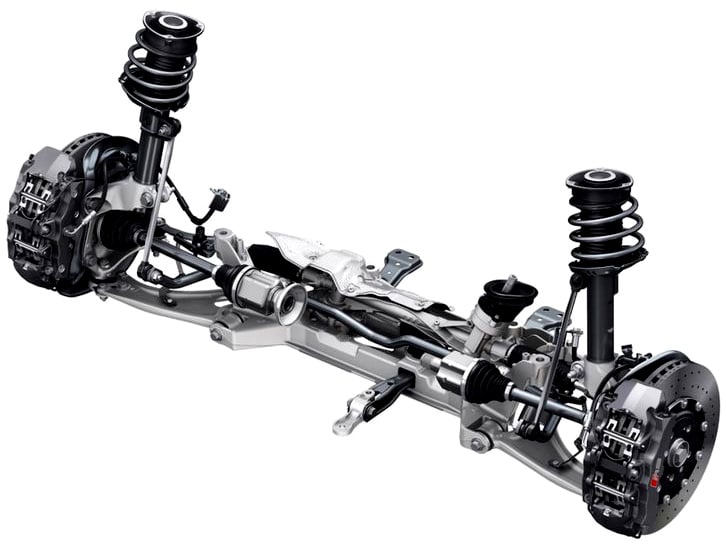
This is by far the most common front suspension type, primarily because it’s inexpensive, simple, and compact.
That doesn’t make it bad, though. MacPherson struts are found on many performance cars, and this suspension style does a great job when everything is set up properly.
A MacPherson setup uses only a single lower arm that the wheel hub is connected to, and there’s a smaller arm to prevent it from moving back and forth in the wheel arch.
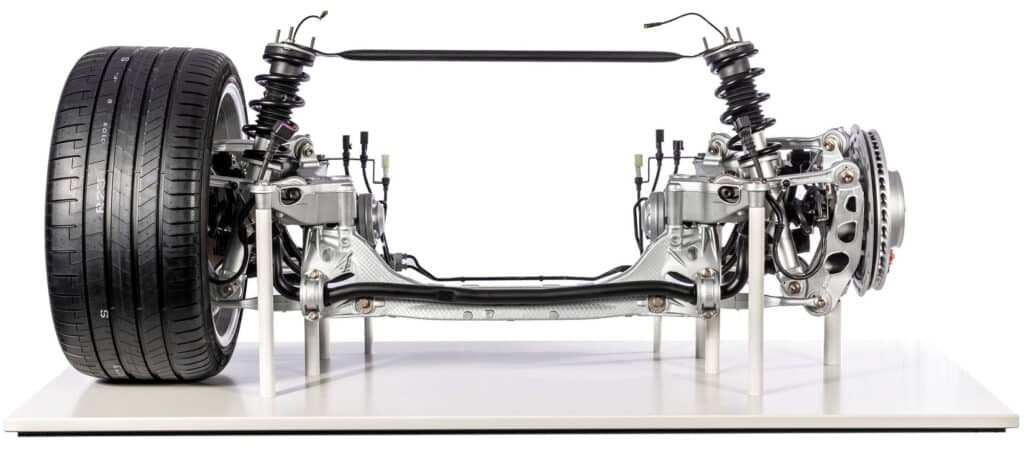
Like any suspension setup, it does come with some drawbacks. In this case, a lack of adjustability, the fact that when the wheel moves up or down, it can severely affect the camber angle, and there’s more flex in the strut mounts (which can be fixed with a strut brace).
In addition, if you’re going full-stance and want that Onikyan look, you might need to install camber plates so you can adjust your camber angle.
Multi-link Suspension
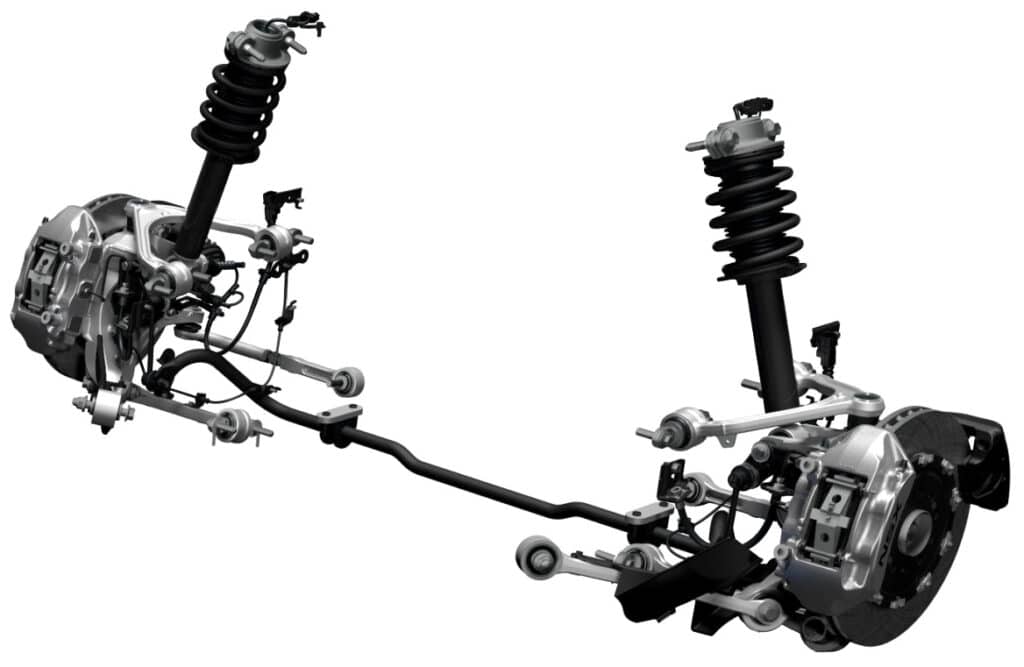
This is the most modern and arguably the best suspension design — depending on what the car will be used for.
With three or more arms per wheel, it allows for more adjustment and fine-tuning than other setups.
Unfortunately, it’s also highly complex, more expensive, and difficult to make, so it’s rarer.

Considering how adjustable this setup is, it’s perhaps somewhat surprising that it’s not all that commonly used on race cars.
That’s all down to its complexity. Modifying a car with this type of suspension can often throw things out of balance, so expect to spend a lot of time fine-tuning the setup — provided it has fully adjustable arms.
Double Wishbone
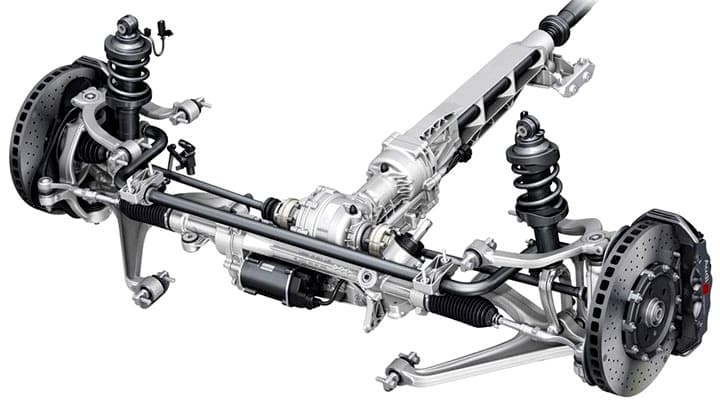
If you want the best static suspension for performance use, it’s hard to argue against a double wishbone setup.
It’s commonly found on sports cars, but even some regular everyday models feature double wishbone suspension, such as the Lexus IS 300.
Double wishbone suspension consists of two V-shaped upper and lower control arms, one at the top and one at the bottom, that are fitted onto the wheel hub, with the shock and spring going through the two Vs.
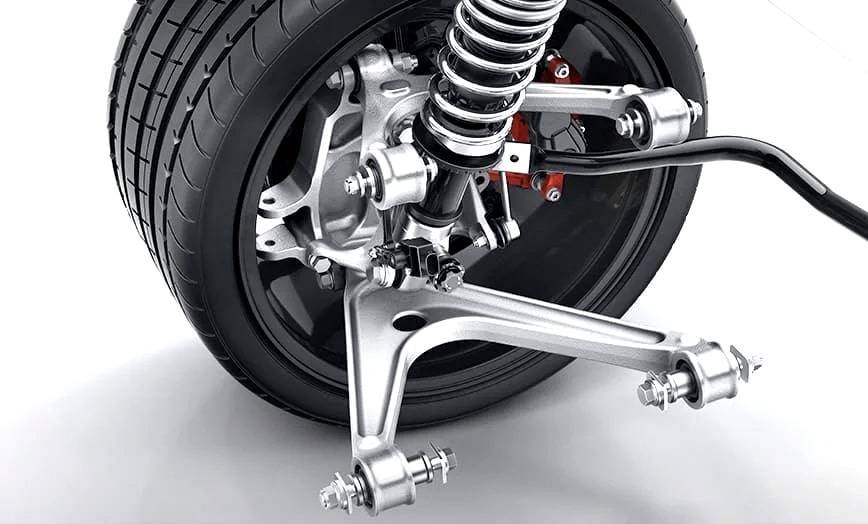
The setup provides predictable changes in suspension geometry when the wheels move up and down in the arches, which translates into more grip in the corners.
Of course, there are also some disadvantages. It can take a lot of time to tweak the adjustments to get it just right, and it also steals away more space under the car compared to a MacPherson setup.
Are Coilovers Static?
Coilovers are probably the most popular option for those who want a car that can perform on both the road and track. Since they’re height adjustable, they also make your car look better.
Seeing as the ride height can be adjusted when you’re running coilovers, some may wonder whether they are considered static.
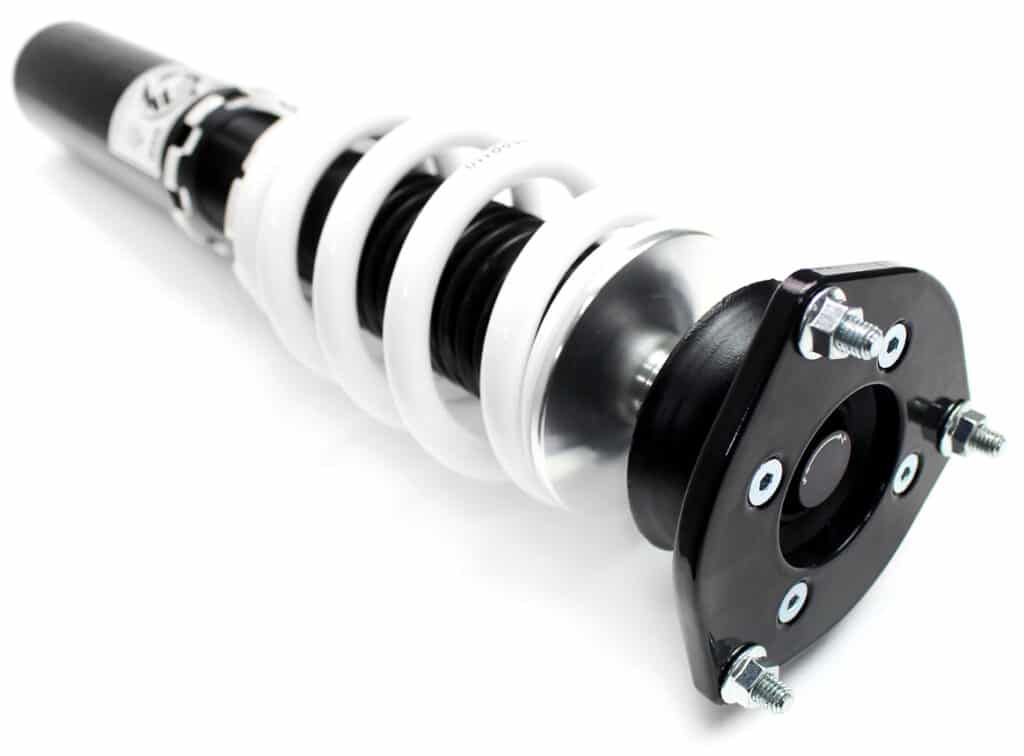
The “static” part refers to how the suspension is adjusted. With a passive (static) suspension setup, you’ll have to stop the car and physically adjust it yourself.
Since coilovers use springs and shocks to lower the car, and they can’t be adjusted with the push of a button, they are indeed static.
Active setups use electronics, air, or hydraulic systems to control the suspension height and stiffness.
In fact, if you want a static setup, a set of coilovers is the way to go, as they allow for a range of adjustments, including stiffness, rebound, and the aforementioned height.
They’re not for everyone, though. Depending on how you use your car and what your goals are, you may be better off with a bagged setup.
Static vs Bagged: Pros and Cons
Bags vs coilovers is a topic of debate that you probably aren’t a stranger to, especially if you’ve been tinkering with the idea of modifying your suspension.
In fact, enthusiasts have argued over static vs bagged cars since the dawn of the stance movement, so which setup is better?
Static Setup
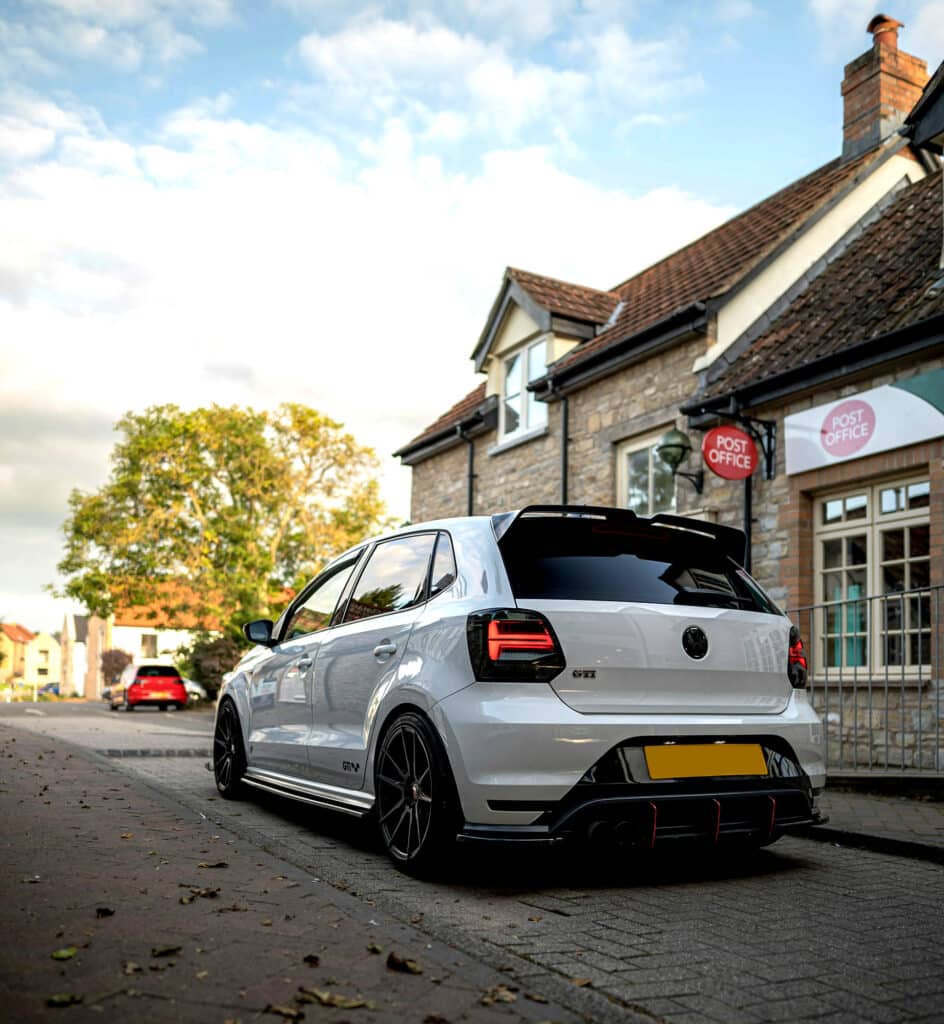
Static suspension is lightweight, the setups are simple and straightforward, and it’s highly effective at what it’s designed to do.
Coilovers can be used for both stance cars and track cars, as they come with lots of adjustability that lets you fine-tune the setup, whether for looks or performance.
We’ll emphasize the performance part, as coilovers are ideal for aggressive driving. If you’re just going for looks, it’s important to know that they do come with one serious drawback — reduced comfort for everyday use.
Then again, coilovers can be pretty cheap if you opt for one of the more basic setups, and they’re also easier to install, so there can be substantial savings by going down that route.
Coilover pros:
- Handling
- Price
- Weight
- Easy to install
- Height, stiffness, rebound adjustability
Coilover cons:
- Stiff for road use
- No on-the-fly adjustments
- The best brands can be expensive
Active Setup

If you have a car with static suspension but want to be able to adjust the car’s ride height without stopping, aftermarket air and hydraulic kits are the way to go.
The most common aftermarket options include hydraulics, which is probably best known from the lowrider culture’s bouncing cars, and air suspension, which is commonly used on stanced cars, so we’ll focus on that one.
A typical air ride setup uses an air compressor, pressure switch, valves, and bags for all four corners of the car.
As you can probably tell, it’s more involving than installing a set of coilovers.

The primary benefit of an airbag setup is that it lets the driver adjust the ride height while on the move, which is useful when you need more ground clearance or want to slam it on the ground when you park.
In addition, a bagged setup is often smoother and more comfortable than a static setup, thanks to the soft bags that absorb the bumps better than a set of stiff springs.
As for handling, traditionally, they left a lot to be desired, but modern, high-quality airbag systems deliver in this regard as well.
However, they do require more maintenance than a static setup, as you should regularly check for leaks, and buying new components can be expensive.
Airbag pros:
- Comfort
- On-the-fly height adjustment
- Looks great when the car is slammed
Airbag cons
- Price
- Installation
- Maintenance
- Poor handling with old or cheap setups
Should You Go Static or Bagged?
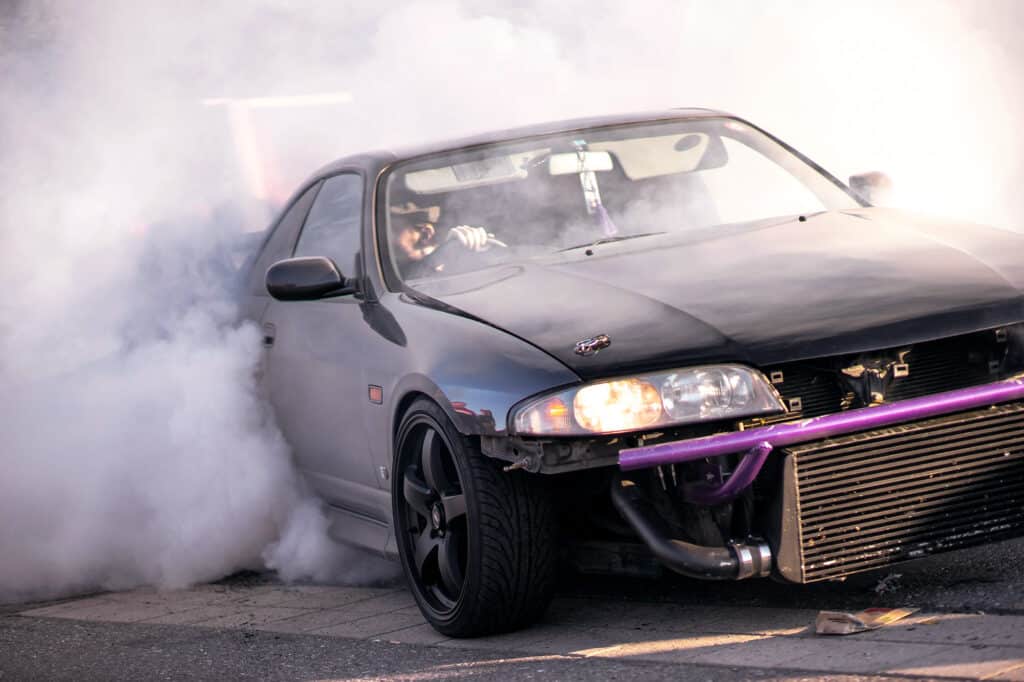
If you’re building a car for some spirited driving sessions on the road or track, or you’re on a limited budget, a static suspension setup using coilovers is the way to go.
A decent set of coilovers can work wonders for your car’s handling, especially in combination with other suspension modifications.
If your budget can’t stretch that far, lowering springs and a set of quality aftermarket shocks will at least give you the handling, even if you can’t adjust things like ride height.
If you’re not that worried about driving fast on twisty roads, have a bit of money to spend, want a more comfortable car, or you’re just going for that stanced look, you should definitely look into an airbag kit.
Do you have a bagged or static car? Let us know in the comments below.

